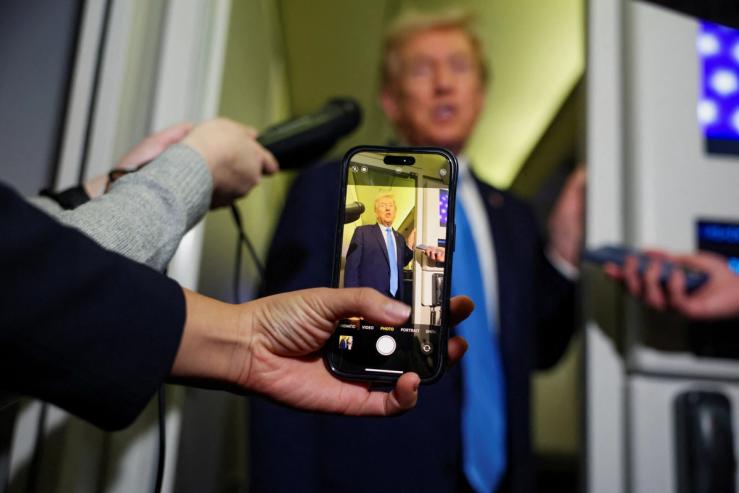A few years ago, then-teenager Nick Shirley was an amateur vlogger making elaborate prank videos with high school buddies: antics like putting dry ice in a truck bed or sneaking into a wedding. Sometimes, he’d tweet zero-engagement man-on-the-street clips to editors at CNN and HuffPost, offering to sell tape from high-profile events, including the Capitol riots on January 6.
Shirley is now a face of Donald Trump’s new media, boasting nearly a million subscribers on YouTube. He is one of two influencers who in recent months posted videos from Manhattan’s Canal Street showing mostly African migrants selling knockoffs of designer goods to tourists and out-of-towners as the locals (our New York team among them) weave through the crowd. Last Sunday, Savanah Hernandez, a former InfoWars staffer, tagged ICE in a video of the scene. Less than 48 hours later, ICE shut down the block, barreling down Broadway against one-way traffic in armored vehicles, triggering national media attention and immediate protests.
Shirley had stumbled onto the Canal Street vendors while in New York making a video about Zohran Mamdani. He told me he wasn’t aware of whether DHS saw his content, and the agency declined to comment on whether the influencers played any sort of role in the raid, citing “operational security.”
But it’s a plausible assumption. In the long-gone days of the mainstream media, top New York Times editors might brief legislators about a big investigation, and get the scoop when they introduced a remedy. Now, the administration takes its cues when tagged in posts from the grassroots right, and federal force can follow vertical videos.
Just weeks ago, both Hernandez and Shirley spoke at a White House antifa roundtable hosted by Trump, flanked by Attorney General Pam Bondi and DHS director Kristi Noem.
“I’ve been everywhere going to places where I think my audience would like to see me document, and if this is a result of honest journalism, then so be it — people want a change and they want law and order restored to their streets,” Shirley said.
It’s a major shift from the first Trump administration, in which the online right was tolerated, but getting Trump’s attention likely required a hit on Fox News or a clip in the New York Post. While sympathetic to conservative institutional media, federal law agencies did not often make moves based on posts from the nascent right wing creator class.
During the first Trump administration, activist and self-styled journalist Laura Loomer didn’t get any support from the administration when she got booted from ride-share apps for complaining about Muslim drivers. Loomer settled for chaining herself to the company’s New York office.
These days, her posts are taken seriously by the federal government.
Loomer gave me another example: Less than 24 hours after tagging the US State Department and Secretary of State Marco Rubio in posts on X complaining that Palestinians were being given US visas, she said, the department stopped granting visas to people coming from Gaza.
The Trump administration “has seen how unreliable the Fake News media is and how much chaos they created with lies,” Laura Loomer, the face of this new form of media activism, texted me. “They have come to see first hand how much more accurate and reliable the independent media is.”


